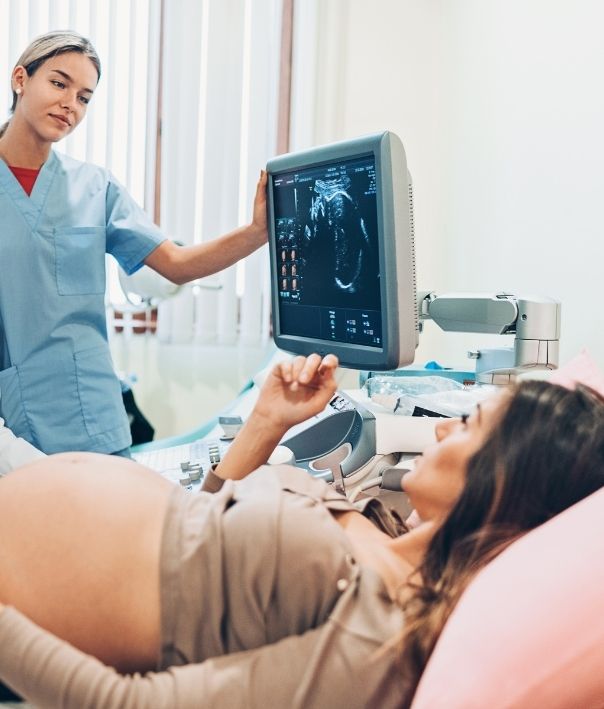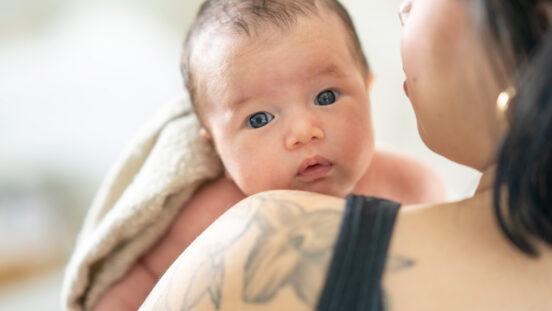Pregnancy scans and screens explained: Bindi Irwin shares the size of her ‘baby wildlife warrior’

The antenatal tests that help track the health and size of your bub.
In August, Bindi Irwin and her husband Chandler Powell shared with the fans the exciting news that they are expecting their first child.
“Baby Wildlife Warrior due 2021,” Bindi, 22 wrote on Instagram at the time.
“Chandler and I are proud to announce that we’re expecting! It’s an honour to share this special moment in our lives with you.”
Bindi is continuing to share the special moments of her pregnancy journey with followers too.
Alongside an image of herself snuggling up to Chandler as they hold a koala and a baby joey, Bindi proudly shows of one of her first pregnancy scans.
“The animal joeys we care for are excited to meet our human joey,” she captioned the gorgeous pic.
“Baby Wildlife Warrior is about about the size of a hummingbird now! We can’t wait to teach our little one about the importance of protecting our planet and the beauty of the wildlife and wild places we love so much. Thank you for your kindness and support on this magical journey,” wrote Bindi.
“Our little Wildlife Warrior is going to be so loved,” added Chandler in the comments section.
So, exactly what tests and scans do you take during pregancy? Over the nine months you spend growing a tiny human inside you, there’ll be blood tests, urine tests and probably an ultrasound or two, as well as regular blood-pressure checks and those exciting moments when you hear baby’s heartbeat and see pictures of your unborn bub.
There are also other tests to check for abnormalities in your growing baby. Here’s a list of some of the scans and diagnostic tests you may be offered.
COMMON TESTS
Early scan: 6 to 12 weeks
An ultrasound may be ordered by a midwife or doctor if you have no idea of the date of your last period. It may also be suggested if you have a history of miscarriage or you’re experiencing pain or bleeding.
Anomaly scan: 18 to 20 weeks
Your baby will be recognisably human by this scan (and you can even choose to have it done in 3D to really see the shape of things to come). Her organs will be checked for abnormalities and she’ll be measured to find out if she’s growing properly. The shape of your uterus and placenta will be checked. This scan can often detect the sex of your baby, but not to the extent you’d be confident enough to start choosing nursery paint colours.

An ultrasound helps to check your baby is growing properly.
SCREENING TESTS
Nuchal translucency: 11 to 13 weeks
This test looks at how much fluid has accumulated behind the baby’s neck to determine the chance of Down syndrome. It’s done by ultrasound and may be coupled with a blood test. The result will give you a risk ratio (such as 500 to one) of having a baby with Down syndrome; however 10-25 percent of cases will go undetected. If your risk ratio is high or you want more conclusive results, there are more accurate but invasive tests available (see Diagnostic Tests, below).
Maternal serum testing: 15 to 18 weeks
This is a simple blood test (on the mother) to see if the foetus has an increased risk of a chromosomal problem or neural tube defect. It only gives you a risk ratio and a high percentage of affected babies are missed. Out of 50 babies identified as having a problem, only one or two will eventually turn out to have an abnormality.

If you’re going to a midwives’ clinic at a public hospital, pregnancy tests will likely be done for free but if you are seeing a private obstetrician, there will be a charge.
DIAGNOSTIC TESTS
Before undertaking any tests that check for abnormalities, think about what you would do if the results were positive. Finding out about a complication before the baby reaches full term allows you to either prepare for it or consider having a termination.
Chronic Villus Sampling (CVS): 10 to 12 weeks
This test can detect Down syndrome and cystic fibrosis. A needle is inserted through the mother’s abdomen to extract cells from the developing placenta. These show the genetic make-up of the foetus, and are examined for abnormalities. There’s a one percent chance the procedure itself will cause a miscarriage.
Amniocentesis: 16 to 18 weeks
Amniotic fluid is extracted via a needle through the mother’s abdomen and examined for chromosomal or neural tube abnormalities and genetic disorders. Because the test is done later during pregnancy than CVS, decisions about whether to consider termination are more complicated. The test also carries a one percent risk of causing miscarriage.
TEST FEES
If you’re going to a midwives’ clinic at a public hospital, tests will probably be done there for free. If you’re seeing a private obstetrician, you’ll go to a hospital or radiology practice where you’ll be charged a fee. A proportion of those fees can be claimed on Medicare.




